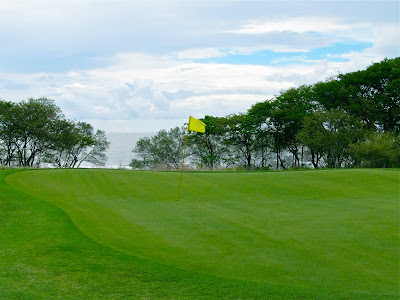 People seem to like beach photos, so I will show one more beach photo before moving on to another subject. Walking along the beach or listening to the waves and breathing the ocean breezes can make one tired, I guess, so why not grab a book or a magazine and relax and perhaps have a little snooze under a shade tree along the beach?
People seem to like beach photos, so I will show one more beach photo before moving on to another subject. Walking along the beach or listening to the waves and breathing the ocean breezes can make one tired, I guess, so why not grab a book or a magazine and relax and perhaps have a little snooze under a shade tree along the beach?These lounge chairs are part of the grounds of the Capitan Suizo Resort, which is at southern part of Tamarindo beach. It is about halfway between our condo on Langosta Beach and our condo at the Diria Resort in the middle of Tamarindo Beach. We obviously walk past this area frequently, but resist the temptation to relax in the lounge chairs, as they are, of course, reserved for guests at the Capitan Suizo.
We do enjoy stopping in for dinner at the Capitan Suizo restaurant, which is right beside the beach.
This week we are showing photos of India, focusing on some of its colorful people, on Viva la Voyage, our travel photo site


















.JPG)











